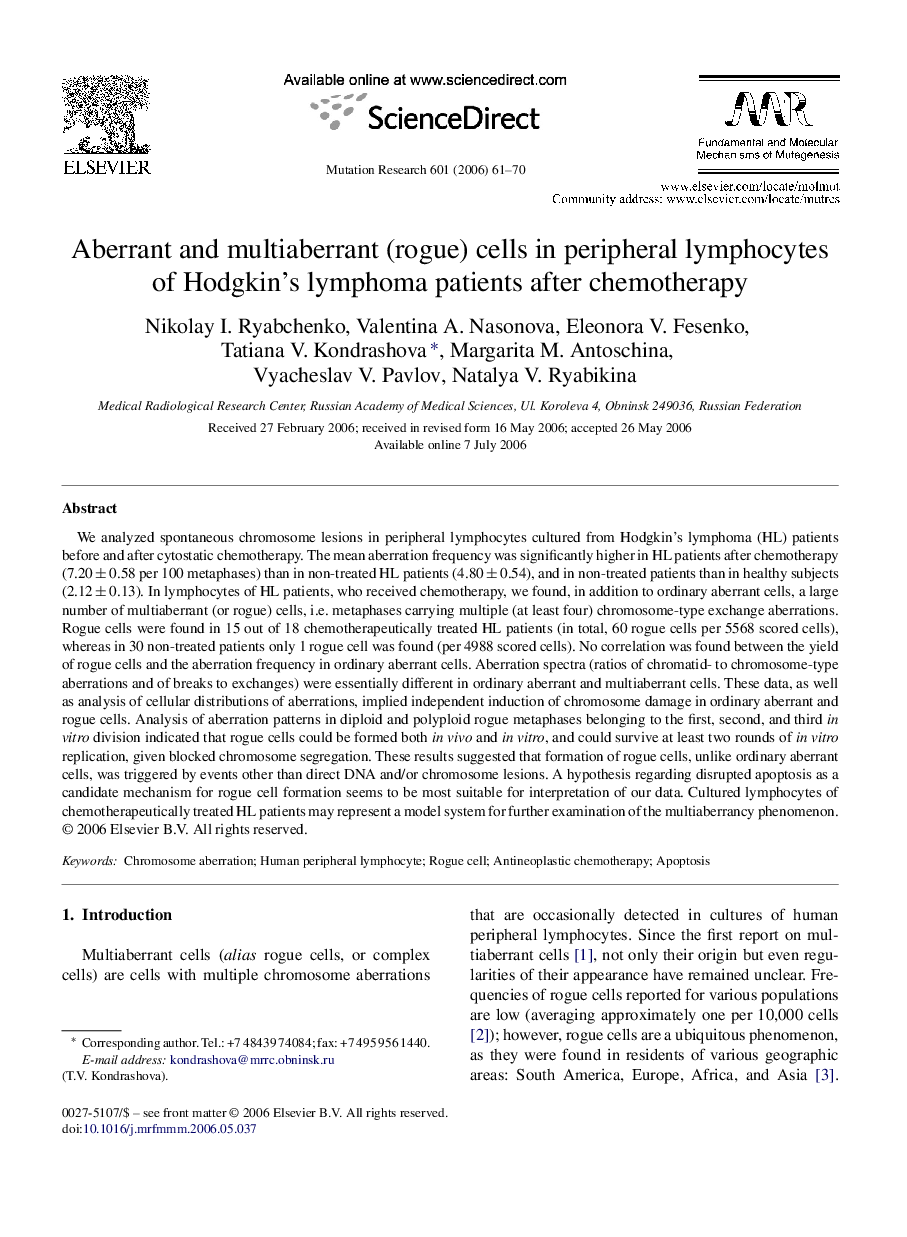| Article ID | Journal | Published Year | Pages | File Type |
|---|---|---|---|---|
| 2147564 | Mutation Research/Fundamental and Molecular Mechanisms of Mutagenesis | 2006 | 10 Pages |
We analyzed spontaneous chromosome lesions in peripheral lymphocytes cultured from Hodgkin's lymphoma (HL) patients before and after cytostatic chemotherapy. The mean aberration frequency was significantly higher in HL patients after chemotherapy (7.20 ± 0.58 per 100 metaphases) than in non-treated HL patients (4.80 ± 0.54), and in non-treated patients than in healthy subjects (2.12 ± 0.13). In lymphocytes of HL patients, who received chemotherapy, we found, in addition to ordinary aberrant cells, a large number of multiaberrant (or rogue) cells, i.e. metaphases carrying multiple (at least four) chromosome-type exchange aberrations. Rogue cells were found in 15 out of 18 chemotherapeutically treated HL patients (in total, 60 rogue cells per 5568 scored cells), whereas in 30 non-treated patients only 1 rogue cell was found (per 4988 scored cells). No correlation was found between the yield of rogue cells and the aberration frequency in ordinary aberrant cells. Aberration spectra (ratios of chromatid- to chromosome-type aberrations and of breaks to exchanges) were essentially different in ordinary aberrant and multiaberrant cells. These data, as well as analysis of cellular distributions of aberrations, implied independent induction of chromosome damage in ordinary aberrant and rogue cells. Analysis of aberration patterns in diploid and polyploid rogue metaphases belonging to the first, second, and third in vitro division indicated that rogue cells could be formed both in vivo and in vitro, and could survive at least two rounds of in vitro replication, given blocked chromosome segregation. These results suggested that formation of rogue cells, unlike ordinary aberrant cells, was triggered by events other than direct DNA and/or chromosome lesions. A hypothesis regarding disrupted apoptosis as a candidate mechanism for rogue cell formation seems to be most suitable for interpretation of our data. Cultured lymphocytes of chemotherapeutically treated HL patients may represent a model system for further examination of the multiaberrancy phenomenon.
